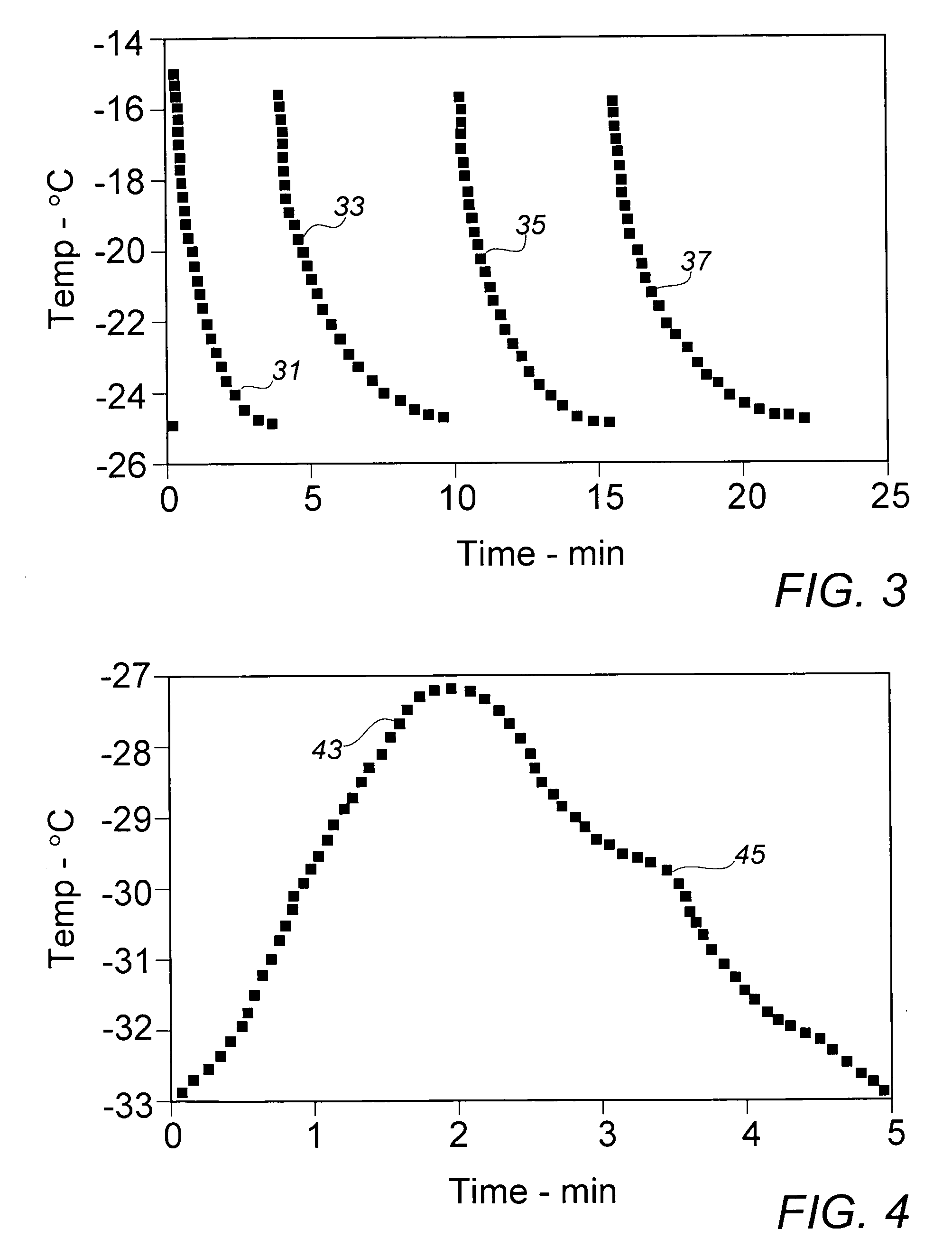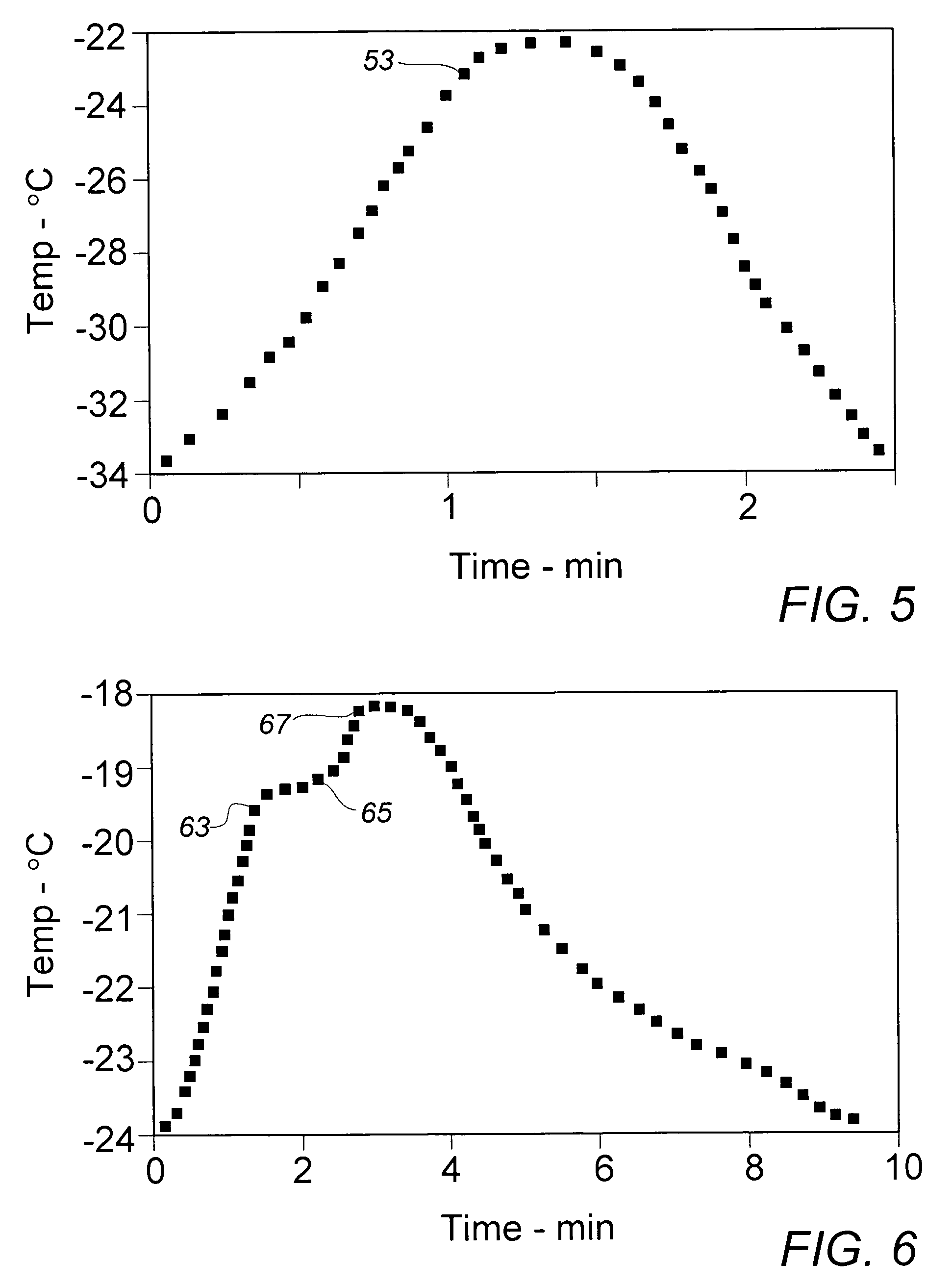Morphology control of substituted diacetylenic monomers for shelf life monitoring systems
a diacetylenic monomer and morphology control technology, applied in the preparation of carbamic acid derivatives, instruments, organic chemistry, etc., can solve the problems of premature color-shift polymerization of many of the diacetylenic monomer materials, the distribution of monomer particle size and the associated instability of the tti composition response continue to be prevalent, and the effect of increasing the number of tti compositions
- Summary
- Abstract
- Description
- Claims
- Application Information
AI Technical Summary
Benefits of technology
Problems solved by technology
Method used
Image
Examples
example i
[0025]In order to provide a source of active diacetylenic monomer component to be used as exemplary material in the context of the present invention, a stock composition of a preferred monomer, 2,4-hexadiyn-1,6-bis (ethylurea), dubbed “KE” by a major user in the marketplace, was prepared in a synthesis comprising the reaction of mono-propargylamine and ethylisocyanate as described in the above-cited references, e.g., U.S. Pat. No. 4,788,151. As in a final stage of the described synthesis process, the crude crystalline KE monomer was recovered and purified from an acetic acid solution by cooling at a moderate rate from about 100° C. to about 20° C. in a recrystallization vessel set in an external water bath. In the course of the gradual cooling, a significant amount of recrystallized monomer product appeared at about 45° C., a temperature which could be deemed the aforementioned “nominal” recrystallization temperature for this monomer material.
[0026]The recrystallized stock monomer p...
example ii
[0027]In the interest of ease of manufacture and more rapid recovery of recrystallized diacetylenic monomers, earlier recrystallized processing of these materials employed, in lieu of solely external bath or jacket cooling, a quenching operation in which about 3 parts by weight (Note: compositions and component ratios are presented throughout this description on a weight basis, unless otherwise specified) of a solution of near monomer solute saturation, e.g., about 10% of crystalline KE monomer in acetic acid at about 95° C., were mixed with rapid stirring agitation into a body of about one part of methanol at initial ambient air temperature of about 20° C. The methanol quenching fluid is substantially a non-solvent for the monomer at the lower quenching temperatures. After filtration, washing sequentially with methanol and acetone, and air-drying, recovery of recrystallized KE monomer was generally about 80% to 85%. Recovered monomer is normally stored under refrigeration until ult...
example iii
[0029]To gain further insight into whether the recrystallized monomer particles might be sufficiently reduced in size by lowering the temperature of the quenching fluid, Example II was repeated with the exception that the methanol in the quenching vessel was cooled to about 0° C. in an external circulating ice-water bath prior to introduction of the KE monomer solution. Over the course of the quenching recrystallization period, the fluid mixture temperature rose to about 65° C. Despite the significantly lower initial recrystallization temperature, the mean recovered particle size of 24.7 μm varied little from the stock material, while the size distribution suggested by the Decade Ratio of 14.8 varied only minimally from that exhibited in the material of Example II.
PUM
| Property | Measurement | Unit |
|---|---|---|
| temperature | aaaaa | aaaaa |
| temperature | aaaaa | aaaaa |
| temperature | aaaaa | aaaaa |
Abstract
Description
Claims
Application Information
 Login to View More
Login to View More - R&D
- Intellectual Property
- Life Sciences
- Materials
- Tech Scout
- Unparalleled Data Quality
- Higher Quality Content
- 60% Fewer Hallucinations
Browse by: Latest US Patents, China's latest patents, Technical Efficacy Thesaurus, Application Domain, Technology Topic, Popular Technical Reports.
© 2025 PatSnap. All rights reserved.Legal|Privacy policy|Modern Slavery Act Transparency Statement|Sitemap|About US| Contact US: help@patsnap.com



